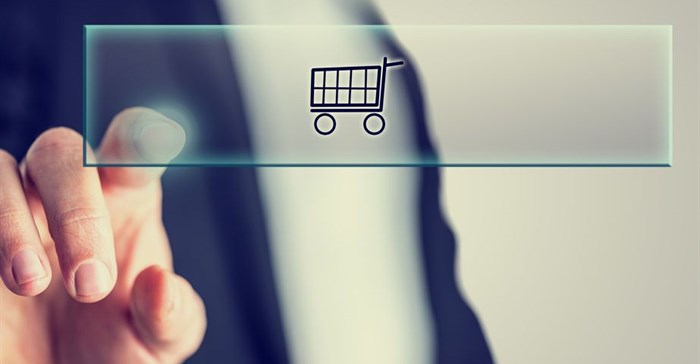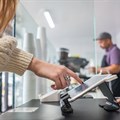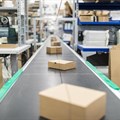
Subscribe & Follow
Automation and data-driven decision-making to power retail in 2021

Mark Thomson, director of retail and hospitality solutions EMEA at Zebra Technologies, unpacks how intelligent digital technology can optimise retail processes and help companies better serve their customers.
How has the pandemic impacted retailers in 2020, 2021 and beyond?
Mark Thomson: Due to the change in shopper behaviour during the pandemic and lockdowns, retailers have been impacted in three main ways: increased demand for online shopping, the closure and reopening of non-essential stores, and a reduced frequency and increased basket size when customers do visit stores.
The pandemic has also further exposed and increased vulnerabilities across retail ecosystems, driving action toward change. Retailers are urgently rethinking their stores’ purpose and looking to integrate the physical and digital experiences.
To achieve digital transformation, retailers’ interest in innovative technologies, solutions and new operating models continues to grow. Many retailers thought they had years to expand their operations and transformation, but they have found themselves making necessary changes in a matter of months due to Covid-19’s impact.
What is retail automation and its benefits?
Intelligent automation has been facilitated by several factors from artificial intelligence (AI) and machine learning (ML), to the accessibility of robotics and data analytics, and even virtual technology assistants from the consumer space such as Alexa and Siri. These types of technologies are becoming more apparent as enterprises leverage them to improve operational workflows such as replenishment, fulfilment, deliveries and customer experiences.
Today, retailers face an increase in physical store costs while revenues generated by these stores are decreasing. To reduce the “cost to serve,” they need to implement retail automation by leveraging technologies such as AI, machine and computer vision and prescriptive analytics. This enables better decision-making, redirecting human focus to the most valuable tasks and removing mundane, repetitive tasks.
Retail automation is a combination of physical robots and physical mobile automation, fixed infrastructure like RFID, computer vision and shelf edge cameras. All this provides continuous visibility inside a retail store environment. This benefits retailers by ensuring they have the right products to optimise revenues.
Within store and supply-chain operations, retail automation improves logistics, backroom, front-of-store and e-commerce operations. For example, retail automation is helping store workers identify availability issues, improve price integrity and optimise merchandising and assortment, and also ensure item availability is balanced between both in-store shoppers and on-line order fulfilment. This reduces substitutions and keeps shoppers satisfied.
The continuing acceleration of e-commerce is driving retailers to use stores as fulfillment centers for online orders to meet shopper demands for convenience and delivery speed. Retailers are also deploying both mobile and fixed automation within their e-commerce operations to help address the growth of online shopping due the impact of Covid-19.
Additionally, the need for real-time visibility across the entire supply chain to meet shopper demands is stronger than ever. Even if retailers have data analytics and machine learning in place, everything is basically operating off historical data. This is a challenge and there are new data sources that can be injected into prescriptive or other advanced data analytics solutions to address this.
Configuring workforce-management software to ensure the right staff are on shift at the right times and applying prescriptive analytics to drive valuable real-time tasks are different ways of thinking in the new normal. Being able to plan around what's happening and injecting real-time data into new operational-decision models is becoming a retail requirement.
Combining data and testing statistics with other external sources to drive better decisions is what the most innovative retailers are doing right now. It’s about being more proactive and prescriptive rather than reactive.
Which technologies have retailers requested in 2020 and what new technologies should they implement in 2021?
Dealing with the consequences of the pandemic is driving retailers to seek out new solutions to augment their omnichannel capabilities. With the increase of e-commerce, they need an online presence, and they also must be able to fulfill demand while maintaining profitability.
This means being as close to the point of consumption as possible. Deliveries have increased, but the rapid acceleration of click and collect as well as kerbside delivery as a customer preference has also accelerated the need for retailers to adopt new technologies.
With many retailers picking online-ordered products directly from store shelves, they need better visibility of their available inventory to reveal real-time stock levels. Inaccuracies create friction, increase substitutions and can damage a retailer’s brand. Part of the challenge for retailers is the ability to forecast and manage their supply chains effectively, without knowing if everything is going to be in demand.
Deploying intelligent automation solutions based on machine and computer vision systems can help give real-time visibility to improve inventory availability into current levels. Using store associates to manually scan and track inventory, pricing and merchandising is time-consuming and error-prone.
It is more efficient to implement an intelligent automation platform that collects and synthesises inventory-related data in real time and then directs staff to take appropriate actions. This enables retailers to empower store associates to increase their productivity and decrease wasted time doing repetitive tasks such as wandering around trying to find products.
The speed at which retailers are adjusting to sell their products online is forcing them to reorganise their entire supply chains as well as their fulfilment models. With the help of micro-fulfilment centres, retailers use small-scale warehouse facilities more closely accessible to consumers and often adjacent to a store. Automating these centres to better serve customers is a critical requirement today.
The biggest trend in 2021 and beyond will be retail intelligent automation with data-driven decisions. Staff will inevitably be a key part of this and will be increasingly connected with technology. Retailers will need to keep leveraging intelligent automation to continue improving the performance of their inventories and store associates. They will need to use prescriptive analytics to create smarter retail networks and fulfillment centers.
Included in intelligent automation is collaborative robots (cobots). We see this as part of the intelligent automation front; specifically, people working alongside robots to improve productivity and reduce mundane, repetitive tasks. Use cases for retailers include inventory visibility and fulfillment.
How will prescriptive analytics and software solutions benefit retailers in 2021?
Retailers have already realised that data is critical. The challenge is now to use real-time data for actionable insights that improve the productivity and profitability of the store. Prescriptive analytics impacts business revenue through enhanced customer experiences, enabling retailers to improve employee productivity as well as decision-making in retail operations.
Prescriptive analytics also helps retailers make decisions around resource planning and other key aspects of business, using available data sources to generate meaningful, actionable and real-time insights for meaningful improvements throughout the business. This approach will be key for retailers to understand how to deploy resources in real time to improve and optimise productivity, efficiency and revenue.
How technology responds to the changes in shopper behaviour?
First and foremost, technology can help customers shop the way they want, empowering them to get the products they need in the way that is most convenient for them. Today, there is no single way to shop. Whether shoppers prefer to go into a physical store, order online or use a click-and-collect option, retailers will have to satisfy their customers and adapt by having multiple commerce models in the future.
Retailers must never forget that shoppers want and expect a great shopping experience. They will need to ensure they offer the most frictionless experience to their clients with the help of technology, such as ensuring items are available for both in-store purchase and online orders and/or ensuring they don’t have to queue to check out.
Customers will experience a vastly different shopping journey between retailers who invest in technologies such as intelligent automation and those who do not. Shoppers will benefit from fast, friendly and efficient stores that are well-stocked with the right products at the right price and the greatest variety, with e-commerce orders perfectly fulfilled without substitutions or missing items.
If done correctly, shoppers will not see the technology, but simply notice that retailers who have leveraged intelligent automation are able to offer a better experience, and thus create a happier and more loyal consumer.
















